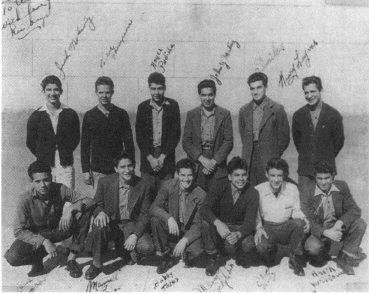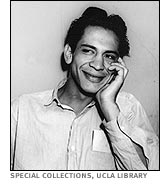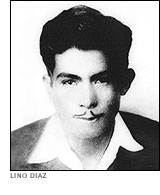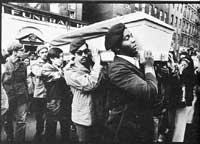Historical Case Studies
Throughout history, there have been many incidences of Latinos being treated unfairly in the criminal justice system. They have often times been unfairly targeted by police and sometimes railroaded by the criminal justice system. One of the first occurrences of such injustices in the United States arose in 1942.
The Sleepy Lagoon Case of 1942
Sleepy Lagoon was a reservoir and a popular hang out for Mexican Americans in the early 1940s. Mexican American Youth used the reservoir for swimming during the day, since they were denied access to public pools during this time period, and often took dates to the Lagoon at night. On the night of August 1, 1942, Sleepy Lagoon stirred with violent activity. On this particular night, Hank Levyas and Dora Barrios were in their car at the reservoir when a group of boys from a nearby neighborhood attacked and beat them up. 19 In response to this, Hank gathered his friends and returned to get revenge on his attackers. Hank was convinced that the men who had beaten him up were attending a party close to the Lagoon. Hank and his friends entered the house and attacked the party goers. When the fight between the two gangs had ended, José Díaz, one of the men who had attended the party, was discovered beaten and stabbed. José later died at Los Angeles General Hospital. 20
During this time, Mexican Americans were often targeted by the press. The press frequently portrayed Mexican-American Youth as being involved in gangs and as danger to the general public. In response to the hysteria the press generated, 300 Mexican Americans were arrested for the involvement of the death of José Díaz and twelve men ended up standing trail.
The trial that followed was incredibly unfair and the judge and prosecutors displayed routine disregard for the boys’ fundamental civil rights. 21 During the trial, the chief of the Foreign Relations Bureau of the Los Angeles Sheriff's office presented a special report on what he called "the Mexican problem." He characterized Mexican American men as only having a “…desire to use a knife or some lethal weapon… in other words, (their) desire is to kill, or at least let blood”. 22 The chief also claimed that when this innate desire was combined with alcohol violent crimes were bound to transpire. This report fueled the hysteria surrounding the dangers of Mexican American Youth and reflected the bias that law enforcement had towards the individuals arrested for the Sleepy Lagoon case. 23
Although there was a complete lack of evidence in the Sleepy Lagoon Trial, the twelve men were convicted of murder and five of them were convicted of assault. 24 This case is just one example of how the criminal justice system does not necessarily work for Latinos. The men in the Sleepy Lagoon case were railroaded by the criminal justice system. They never even had a fighting chance. Unfortunately things have not completely changed and Latinos still face many biases in the criminal justice system today.
The 12 Men of Sleepy Lagoon Convicted of Murder
The Young Lord's Party-Plagued by the U.S. Criminal Justice System
The Young Lord’s Party was a Puerto Rican group that emerged in Chicago in 1959. For several years, the Young Lord’s Party was a street gang that would protect Latinos from white bullies and fought for control of hangout places in their neighborhoods. However, in the late sixties, the Young Lord’s Party evolved from a youth street gang into a nationalist group that demanded social change for Latinos. 25 The evolution of the Young Lords party was a direct result of the experiences that one of its members, Cha Cha Jimenez, had in a United States jail.
Jimenez joined the Young Lord’s Party as a gang member and was arrested numerous times throughout his youth. During one of the times Jimenez was in jail, he noticed the disproportionately high percentage of Latinos in American jails and prisons. Jimenez was not alone in his assessment of Latinos and the U.S. Justice System. During this time, the Latino population in Chicago also expressed their difficulties when dealing with the Chicago police department. Many Puerto Rican residents complained that “…the Chicago police did not treat residents like human beings, but like animals and their presence in the community made residents uneasy”. 26 Jimenez realized that the problems facing Latinos were much bigger than the trivial conflicts between neighborhood gangs. A Young Lords field marshal explained that that gang realized “…it was no good fightin’ each other, what we were doing as a gang had to be done against the capitalist institutions that are oppressing us”. 27
Lead by Cha Cha Jimenez, the newly refocused Young Lord’s Party developed a 13 Point Plan that focused on fighting for the rights of Latinos. The Young Lord’s Party started several community service projects that were designed to meet the needs of people living in the poor parts of Chicago. Their projects included clothing drives, a push for bilingual education in schools, and a free healthcare clinic. 28 The Young Lords Movement instilled self-determination in Puerto Ricans and created a sense of self-worth and pride in the community.
Despite all the good that the Young Lords Party was doing for its community, it still faced harassment from the police. During this time, the Young Lord’s Party was holding rallies and demonstrations against Richard J. Daley’s, the mayor of Chicago at this time, Urban Renewal Program. In response to this, Mayor Daley announced a “War on Gangs” and increased the number of police officers on the streets and in the Gang Intelligence Unit. 29 Jimenez was often the target of this Gang Intelligence Unit. Shortly after Daley announced his War on Gangs, Jimenez was taken to the police station because he was on a street corner talking to people about the urban renewal program. Although Jimenez was doing nothing illegal at the time, the police managed to arrest him based on warrants that were two years old. Throughout 1969 and 1970, Jimenez was arrested eighteen times and had to appear in court three to four times a week. 30
The most memorable event surrounding police corruption for the Young Lord’s Party occurred one evening in May of 1969. On this night, the Young Lord’s were hosting a fundraising benefit when an off-duty police officer came into the party because of loud music. Several hazy events transpired that resulted in Officer Robert Lamb shooting and killing one of the Lord’s most dedicated members, Manuel Ramos. The Young Lord’s claimed that the shooting was unprovoked and Ramos was only trying to peacefully break up a fight while Lamb claimed that he shot out of self defense. 31 While the events of Ramos’s death are somewhat debatable, the injustices of the criminal system took its toll on the Young Lords.
Even the events causing the Young Lord’s Party to dissolve can be tied to police corruption. COINTLPRO, a counterintelligence FBI program designed to break up radical political organizations had a big impact on the Young Lords Party. In regards to the Young Lords, the FBI’s main goal was to destroy the group from within. The main strategy the police used was to arrest the Young Lords members. This disrupted daily operations and caused the Young Lords to spend its money and time on legal aid and bail. Additionally, COINTELPRO spread false and damaging information about the Young Lords which skewed the public’s perception of the organization. 32 As a result of these COINTELPRO activities, several of the people the Young Lords had been trying to recruit were discouraged from joining the organization and making it stronger.
There are many reasons that the Young Lords Party disintegrated. However, COINTELPRO and the police discrimination the Young Lords faced played a huge role in the break up of the party. The activities on the part of COINTELPRO and the police forces show the discrimination that is so prevalent against Latinos. Even though the discrimination the Young Lords Party faced was in the 1960’s, Latinos still face discrimination today from police forces and this is one of the major problems within the criminal justice system for Latinos.
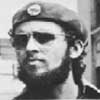 |
A member of the Young Lords Party. Members could typically be identified by the berets they wore.
|
Women of the Young Lords Party. The Young Lords Party was progressive in fighting for women's rights. |
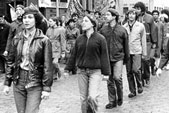 |
| Home | Statistics | Historical Case Studies | Problems | Thoughts Behind Bars | Solutions | Bibliography |
|---|
